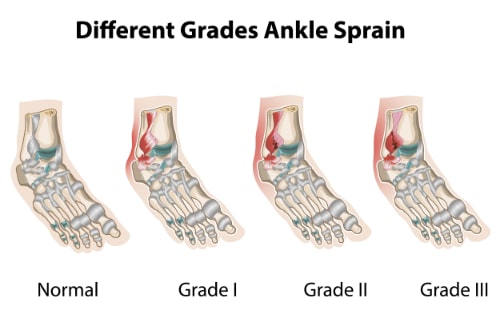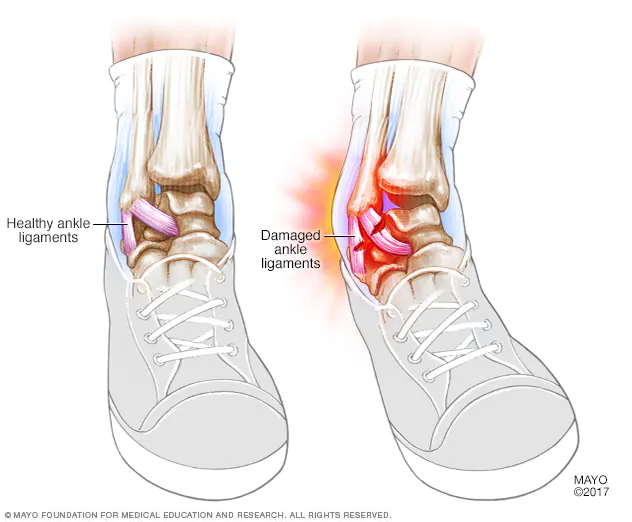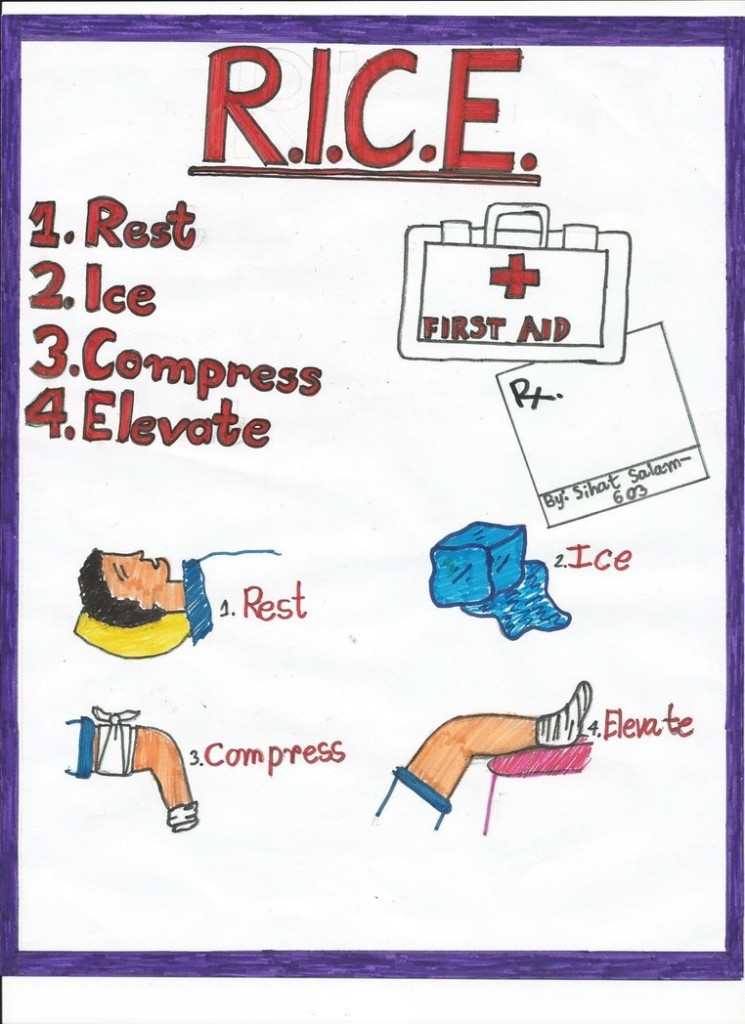Ankle pain occurs due to a range of issues such as lateral ligament sprains, tears, high ankle sprains, joint issues, flat feet and tendon problems. Ankle pain can become quite disabling and frustrating to deal with in your day to day life, so it is important to make sure that you seek help from healthcare professionals such as physiotherapists to help you recover as quickly as possible. At Masnad Health Clinic, we have a dedicated team with over 20 years of experience who will look after you and get you back to doing what you love most.
Ankle Ligament Sprains & Tears
Everything You Need to Know About Ankle Pain Sprains, Tears and Recovery
Do You Have Ankle Pain?

What Causes Ankle Ligament Sprains or Tears
An ankle ligament sprain is an injury that involves an awkward rolling, twisting or turning of the ankle, leading to the ankle ligaments being strained or torn.
An ankle ligament will tear when it has been stretched beyond its limit due to an excessive force in a particular direction, e.g. when you roll your ankle, but your body weight falls on it.
An ankle sprain occurs when your ankle is forced to move out of its normal position, but the force isn’t excessive, causing the ligament to tear. Typically this happens during:
- An awkward landing of your foot after jumping or pivoting
- A fall that causes your ankle to twist
- Rolling your ankle when walking, running or exercising on an uneven surface
- Another person stepping or landing on your foot during a sports activity
There are multiple grades of ankle sprains. The higher the grade, the more trauma to the ligament.
- Grade 1 (Mild). The ligament fibres stretch slightly. Your ankle will have minor swelling and tenderness to the touch.
- Grade 2 (Moderate): The ligament is torn, but it isn’t a complete tear. Your ankle has swelling over the injury, and it hurts to move. You may notice bruising around the foot and ankle 24-48 hours later.
- Grade 3 (Severe): The ligament is torn completely. Your ankle has significant swelling, the injury is painful, walking is difficult, and there is a significant amount of bruising 24-48 hrs later.

Symptoms Of Ankle Ligament Sprains or Tears
- Feeling unstable when walking.
- Sensitivity and tenderness to touch
- Swelling around your ankle joint
- Bruising of the ankle joint, which can also occur up your lower leg and into your foot
- Pain when putting weight on your ankle
- Restricted range of motion
- Popping sound at the time of injury – Typically with the tears.
How Long Until My Ankle Gets Better?
Healing will take anywhere between 4-6 weeks. This depends on the grade of the injury, the amount of treatment you receive, keeping up with your rehabilitation exercises and following load reduction advice. If there is a complete ligament tear, we may advise you to see an orthopaedic surgeon for a review of whether you need surgery.
We typically advise physiotherapy twice a week for the first two weeks, then once a week for three weeks. Then we usually recommend physiotherapy once a fortnight which is tapered to once a month for maintenance and a regular check-up.
Why Does My Ankle Make a Popping or Cracking Sound?
There are two main reasons why your ankle is making noises, especially after a sprain:
- The tendons in your peroneal muscles sit in a groove behind your ankle. If these tendons rub over your ankle bone, it makes a snapping or popping sound. If there isn’t much pain, then don’t worry.
- Gas is released when the ankle joint capsule is stretched. The ankle joint is filled with fluid which keeps the joint lubricated. This liquid causes nitrogen bubbles to form, which when released, cause a popping sound.
You may notice more frequent ankle popping if you’ve recently had an ankle injury, such as a sprained ankle. If it’s causing you pain, make sure to see your doctor, Physiotherapist or Chiropractor.
What to Do if You Rolled Your Ankle and Heard a Cracking Sound?

- After this, it is crucial to see your doctor, a physiotherapist or a chiropractor. Treatment will typically consist of:
- They will decide whether they want to investigate further by sending you for an X-ray and ultrasound if they’re concerned about any fractures or the degree of a ligament tear.
- Education regarding the cause and how to prevent it from worsening
- Advice about activity modification to help ease the pain
- Massage of the leg muscles to reduce swelling, stiffness, pain and increase range of motion. It also helps promote blood flow and healing.
- Ankle joint mobilisations to reduce stiffness within the ankle joint and increase range of motion
- Taping to offload pressure from the tendon
- Exercise via stretching, controlled tendon loading and eventually high explosive movements to return you to full capacity to do your daily tasks.
- Balance training to help increase stability and proprioception.
Does Your Ankle Feel Unstable?
Ankle instability can become a real problem if you do not treat your ankle correctly the first time. Chronic Ankle Instability (CAI) is a condition in which the ligaments in your ankle are constantly sprained or torn due to rolling your ankle.
This will lead to the loss of proprioception – our sixth sense to know where your ankle is without looking at it while walking, leading to rolling your ankle more frequently.
What Can I Use to Stop Ankle Pain?
- Ankle brace
- Archies Thongs
- Cold pack
- Fisiocrem
- Footeez roller
Thank you for reading, and we hope you benefited from this article. To receive treatment for your ankle sprain from our Physiotherapists or Chiropractors, call Masnad Health Clinic on (02) 9793 8840 or BOOK ONLINE.

New Client Offer - 10% OFF
Are you in pain? Not sure if we can help you?
Book your initial appointment and receive 10% off any service!